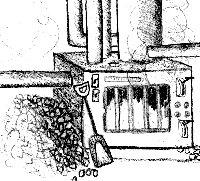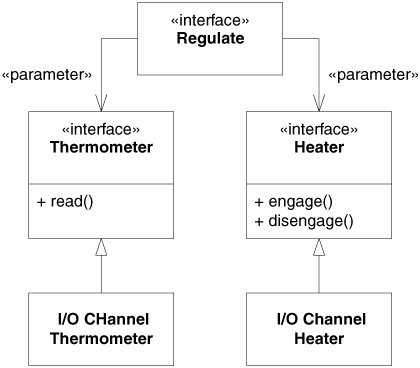The Furnace Example
The Furnace ExampleLet's look at a more interesting example. Consider the software that might control the regulator of a furnace. The software can read the current temperature from an I/O channel and instruct the furnace to turn on or off by sending commands to a different I/O channel. The structure of the algorithm might look something like Listing 11-2. Listing 11-2. Simple algorithm for a thermostat
The high-level intent of the algorithm is clear, but the code is cluttered with lots of low-level details. This code could never be reused with different control hardware. This may not be much of a loss, since the code is very small. But even so, it is a shame to have the algorithm lost for reuse. We'd rather invert the dependencies and see something like Figure 11-5. Figure 11-5. Generic regulator This shows that the Regulate function takes two arguments that are both interfaces. The Thermometer interface can be read, and the Heater interface can be engaged and disengaged. This is all the Regulate algorithm needs. Now it can be written as shown in Listing 11-3 This has inverted the dependencies such that the high-level regulation policy does not depend on any of the specific details of the thermometer or the furnace. The algorithm is nicely reusable. Listing 11-3. Generic regulator
|
EAN: 2147483647
Pages: 272

